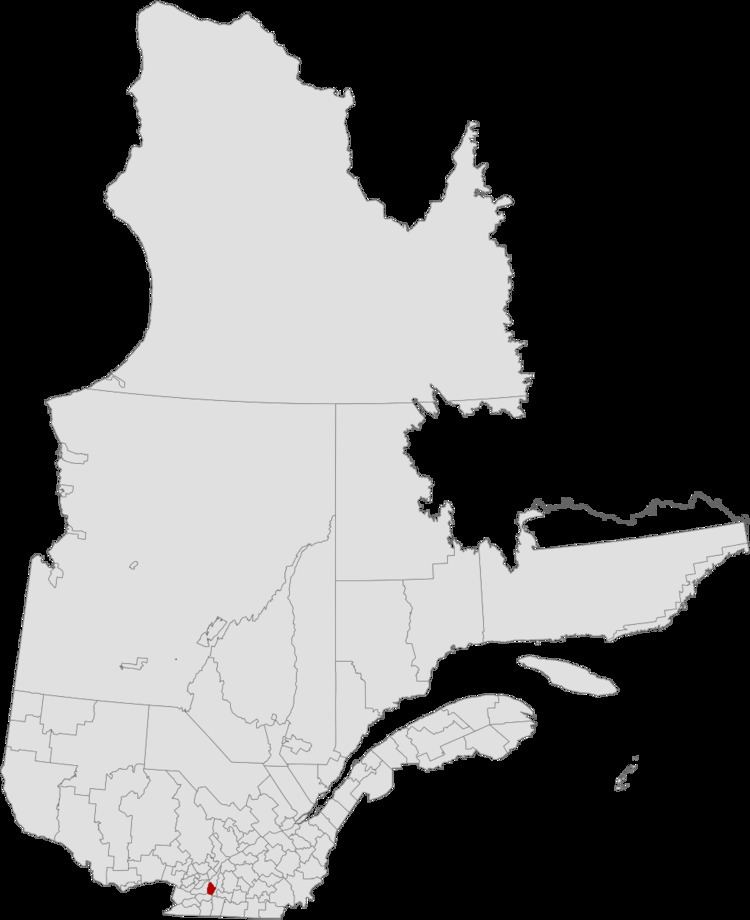Incorporated January 01, 2002 Area 282.4 km² Province Québec | County seat Longueuil Website www.longueuil.ca Population 399,097 (2011) | |
 | ||
Weather 9°C, Wind W at 10 km/h, 46% Humidity | ||
The urban agglomeration of Longueuil was created on January 1, 2006 as a result of the de-amalgamation process brought upon by the Charest government. It encompasses all the boroughs that were merged into the previous city of Longueuil and still retains the same area as that mega-city.
Contents
- History
- Structure
- Central municipality
- Related municipalities
- Population and Reprensentation by district
- Agglomeration powers
- Demographics
- Access Routes
- References
The urban agglomeration of Longueuil is coextensive with the territory equivalent to a regional county municipality (TE) and census division (CD) of Longueuil, whose geographical code is 58.
In 2012, Longueuil mayor Caroline St-Hilaire proposed that the Urban agglomeration of Longueuil leave the Montérégie and become its own administrative region.
History
Longueuil merged on January 1, 2002 with the communities of Boucherville, Brossard, Greenfield Park, LeMoyne, Saint-Bruno-de-Montarville, Saint-Hubert, and Saint-Lambert. These cities became boroughs of the Longueuil megacity. Saint-Lambert and LeMoyne combined to become one borough called Saint-Lambert/LeMoyne. The former city of Longueuil was renamed Le Vieux-Longueuil borough.
The former city hall of Brossard, became the city hall for the new city of Longueuil.
On June 20, 2004, the former boroughs of Boucherville, Brossard, Saint-Bruno-de-Montarville and Saint-Lambert voted to demerge from Longueuil to reconstitute themselves as municipalities on January 1, 2006. The rest of the city stayed intact.
The departure of Saint-Lambert from the city Longueuil resulted in the immediate disbanding of the Saint-Lambert/LeMoyne borough. LeMoyne's small population and territory did not allow it to become a borough of its own. In 2005, the population of LeMoyne was given the choice to pick a new borough between Le Vieux-Longueuil, Saint-Hubert and Greenfield Park. Le Vieux-Longueuil ended up being the winner and amalgamated LeMoyne into its borough on January 1, 2006.
Following the demergers, Longueuil relocated its city hall from Brossard to Saint-Hubert, where it is still located.
Structure
According to the Act respecting the exercise of certain municipal powers in certain urban agglomerations, the cities and boroughs of the urban agglomeration of Longueuil are structured as follows:
Central municipality
Related municipalities
Population and Reprensentation by district
2011 Canadian Census / Longueuil
Agglomeration powers
Under this new system of municipal organization, the agglomeration city and the reconstituted cities (in this case, Boucherville, Brossard, Saint-Bruno-de-Montarville and Saint-Lambert) share powers and responsibilities. The urban agglomeration is headed by an agglomeration council which exercises these agglomeration powers.
Demographics
Language
Mother tongue from Canada 2006 Census
Access Routes
Highways and numbered routes that run through the municipality, including external routes that start or finish at the county border:
